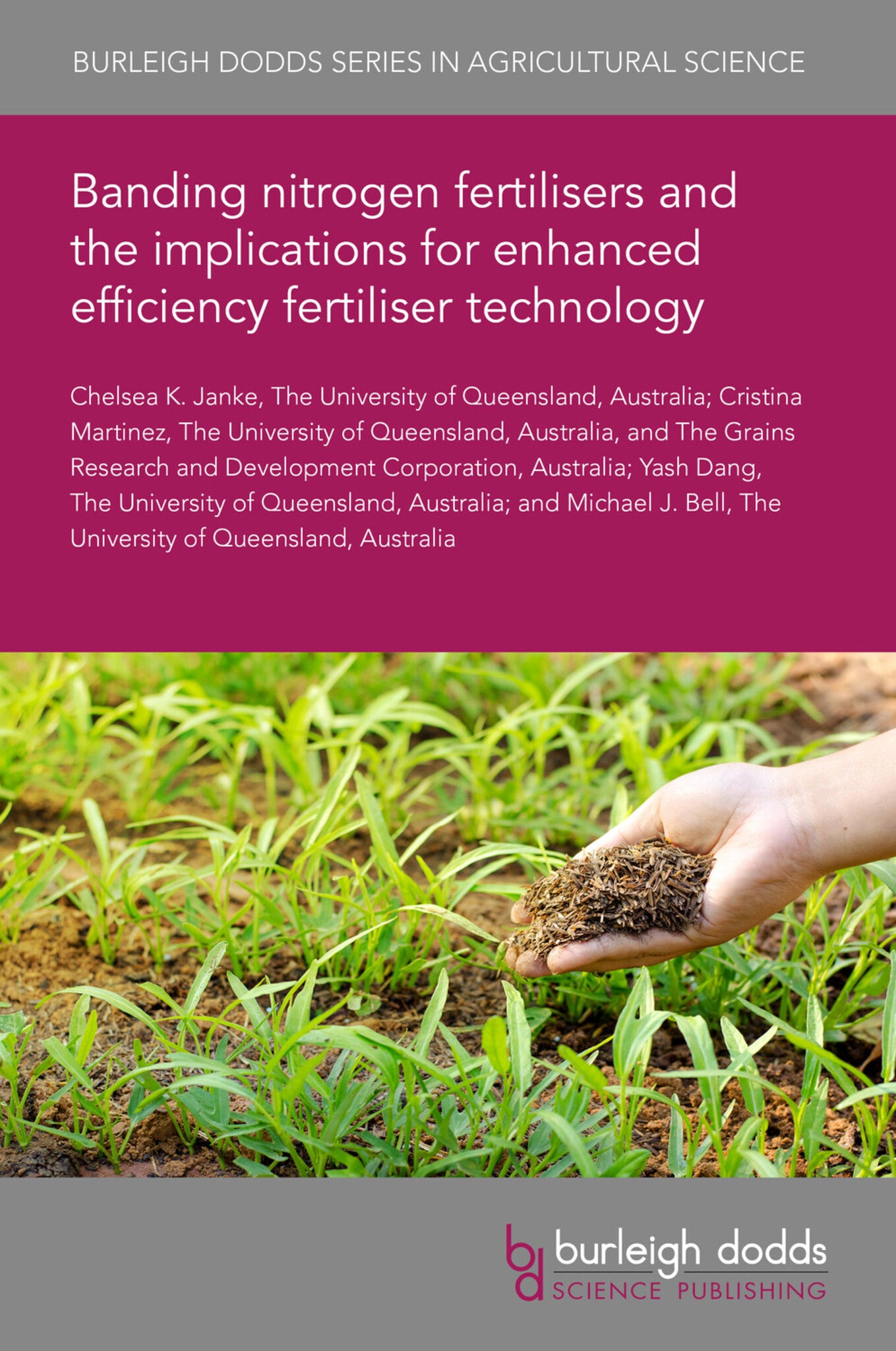We're sorry. An error has occurred
Please cancel or retry.
Banding nitrogen fertilisers and the implications for enhanced efficiency fertiliser technology

Some error occured while loading the Quick View. Please close the Quick View and try reloading the page.
Couldn't load pickup availability
- Format:
-
16 October 2023

Fertiliser placement and type are key factors which regulate on-farm nitrogen (N) use efficiency. However, the interaction of these two management strategies is often overlooked. Efficacy assessments of enhanced efficiency fertilisers (EEFs) must consider the mode of application to not misinterpret outcomes and potentially limit EEF adoption. While the efficacy of broadcast and incorporated EEF applications is well established, recent studies have highlighted the impacts of sub-surface banding on the EEF mode of action. This chapter focuses on the impact of banded fertiliser application and the necessary considerations for effective utilisation of EEFs, including controlled release and chemically stabilised fertilisers. Key reactions within urea-based fertiliser bands are summarised to provide context for subsequent sections which discuss the impact of banding and key influencing factors on the differing EEF technologies. A case study summarises the state of the art on EEF banding, with key knowledge gaps and future trends also provided.

TECHNOLOGY & ENGINEERING / Agriculture / Sustainable Agriculture, Agronomy and crop production, TECHNOLOGY & ENGINEERING / Agriculture / Agronomy / Crop Science, SCIENCE / Environmental Science, Sustainability, Sustainable agriculture, Agricultural science

- 1 Introduction
- 2 Nitrogen dynamics within bands of urea
- 3 Controlled-release fertilisers: nitrogen dynamics and implications
- 4 Chemically stabilised fertilisers: nitrogen dynamics and implications
- 5 Case study: plant uptake and soil nitrogen dynamics froms banded enhanced efficiency fertilisers
- 6 Conclusion and future trends
- 7 Where to look for further information
- 8 References



